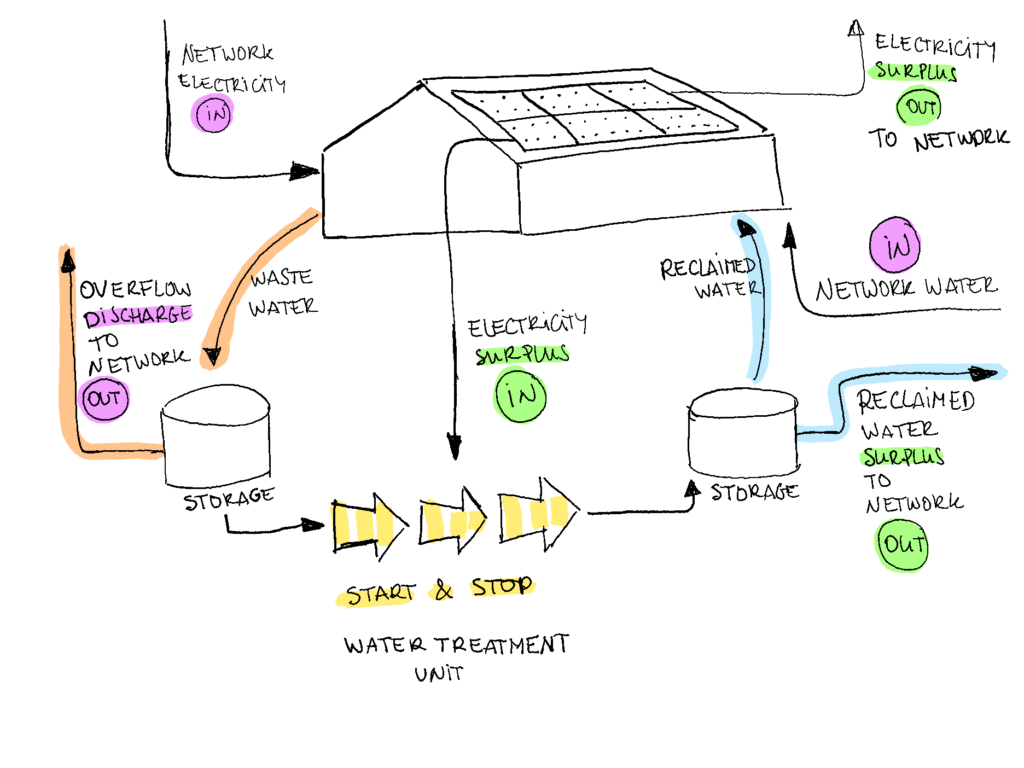As I write this post I’m participating in a series of workshops at the European Policy Lab focused on water reuse. They are part of this bigger project. We’re looking 15 years ahead and building speculative future scenarios for water reuse and policy.
Whenever water reuse is discussed, there is a challenge that calls my attention:
The energy required to make water usable again
Removing unwanted substances from used water often requires an industrial process that runs with energy. The purest the water, the more energy is needed, and this relation may not to be a linear scale, due to the substances to be removed.
There are many applications for reused water that don’t require drinking quality, such as: toilet flushing, urban lawn watering, firefighting or building construction. Nevertheless, some amount of energy is needed for any application.
I believe water reuse is going to be a key element to ecosystems resilience in the future, and I worry that, in this energy hungry society, water reuse could be jeopardised by unpredictable energy prices or availability.
Sourcing energy
It is safe to say that, in some countries, energy from renewable sources is already cost-effective and gaining space to conventional sources. In my country, Spain, some experts are going further and saying that, at the rhythm we’re shifting, we’re electrifying faster than the system is able to manage.
May that be a fact or not, recently Almaraz Nuclear plant shut down production due to not being able to stay competitive with renewables (taxes mediating).
I’m going to use the hypothesis that, in 15 years, sun and wind will be the main energy sources in Spain. They are naturally irregular in their energy production. They have their peaks, just as society too consumes energy in peaks.
I’ve been wondering how to leverage energy peaks and prices in the context of water reuse.
Storing energy
At present we store energy in other forms than electricity when there’s surplus: pumped-storage hydroelectricity at large scale, or domestic setups with solar panels that may combine natural gas for heating with extra electric boilers to preheat water when they’re producing energy surplus.
It seems a key aspect to take advantage of peaks is:
Being able to start the system, store energy, and stop it again at convenience
I wonder if, in 15 years time, a decentralised system (a factory, an office building) that produces energy of its own, could also have a water treatment unit, but one that does not need to operate with continuity 24/7. One that can store waste water until it’s the right (cheapest?) time of the day to process it. The local system would still be connected to a centralised system to cover all it’s needs, just like it happens with decentralised electricity production at present.
I’m ignoring right now the future likelihood of a water treatment process enabling starting and stopping at will, to simplify looking at this interesting system map.

A hypothetical decentralised system that can start, stop and store at convenience.
What incentives could make this to work?
- The purchase price of clean water from the central network being higher than the price at which the decentralised system can sell its energy overplus to the central system
- The quality of water coming from the central network being worse that the output of the decentralised system
- The cost of discharging waste water to the central network being higher than treating the water locally
- The central system buying locally reclaimed water at a price that is worth for the decentralised system.
If you have references that can complete my perspective on this topic, please share them with me on an email or a comment, I’m eager to dig more in the topic!